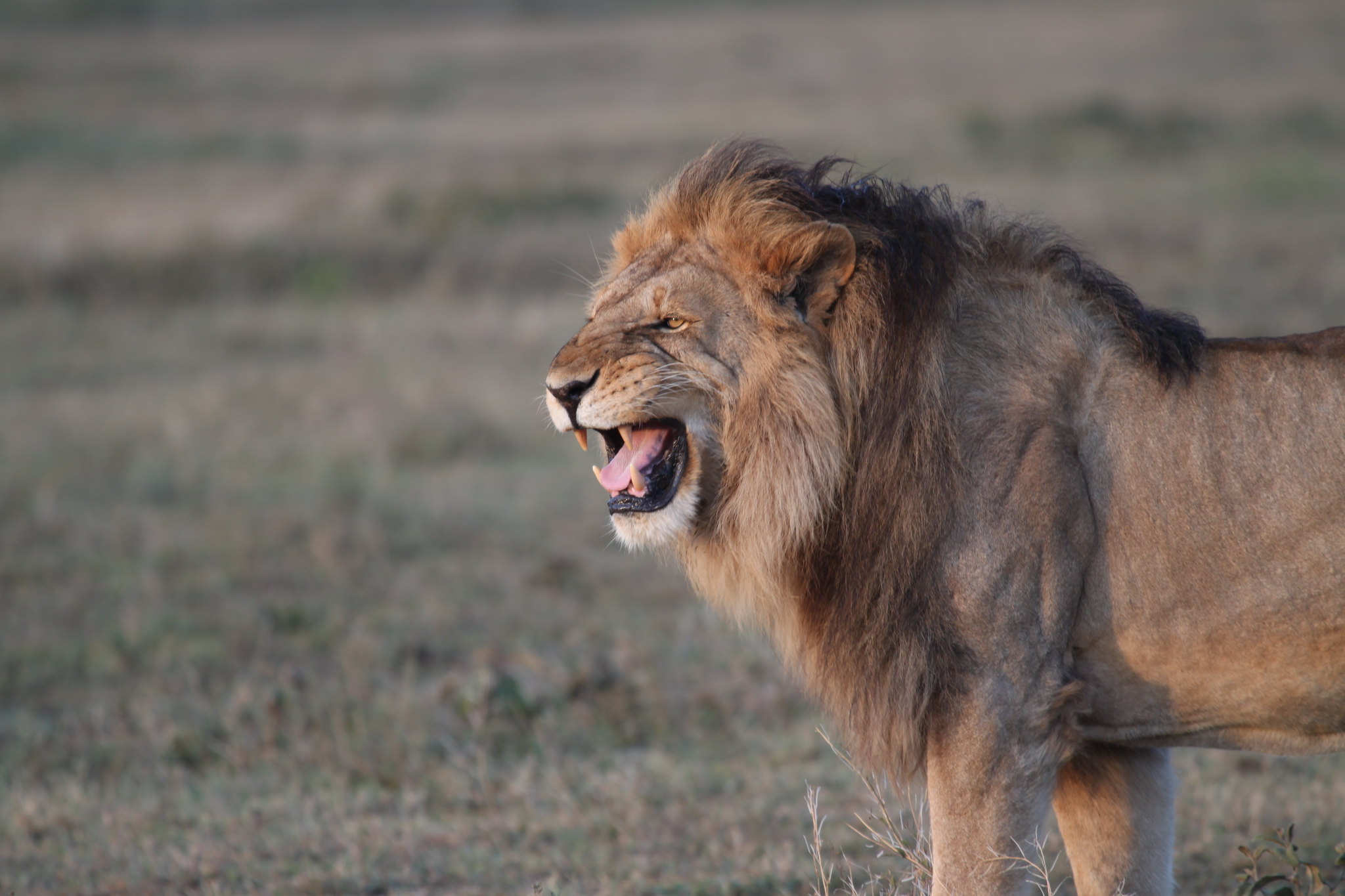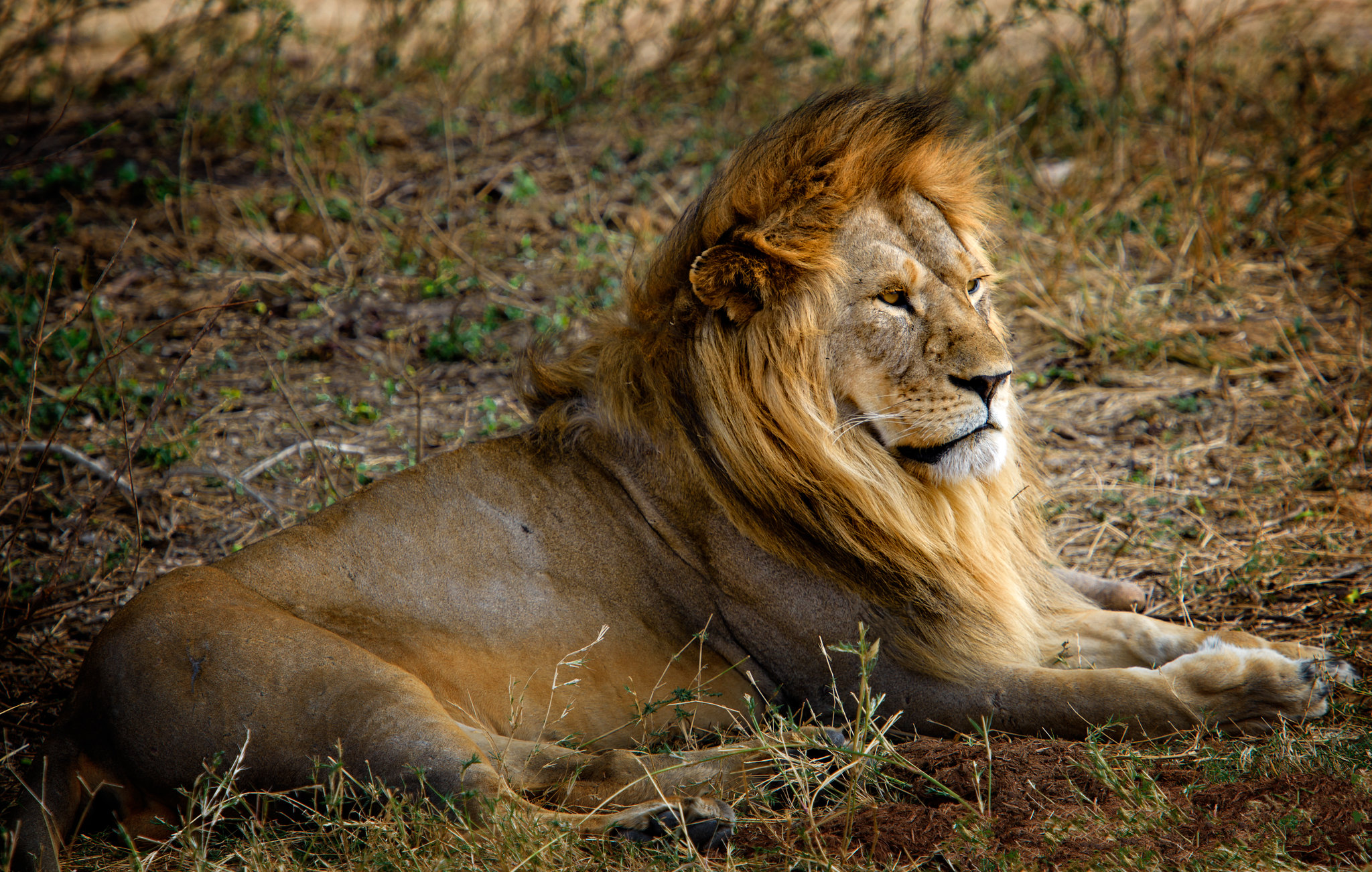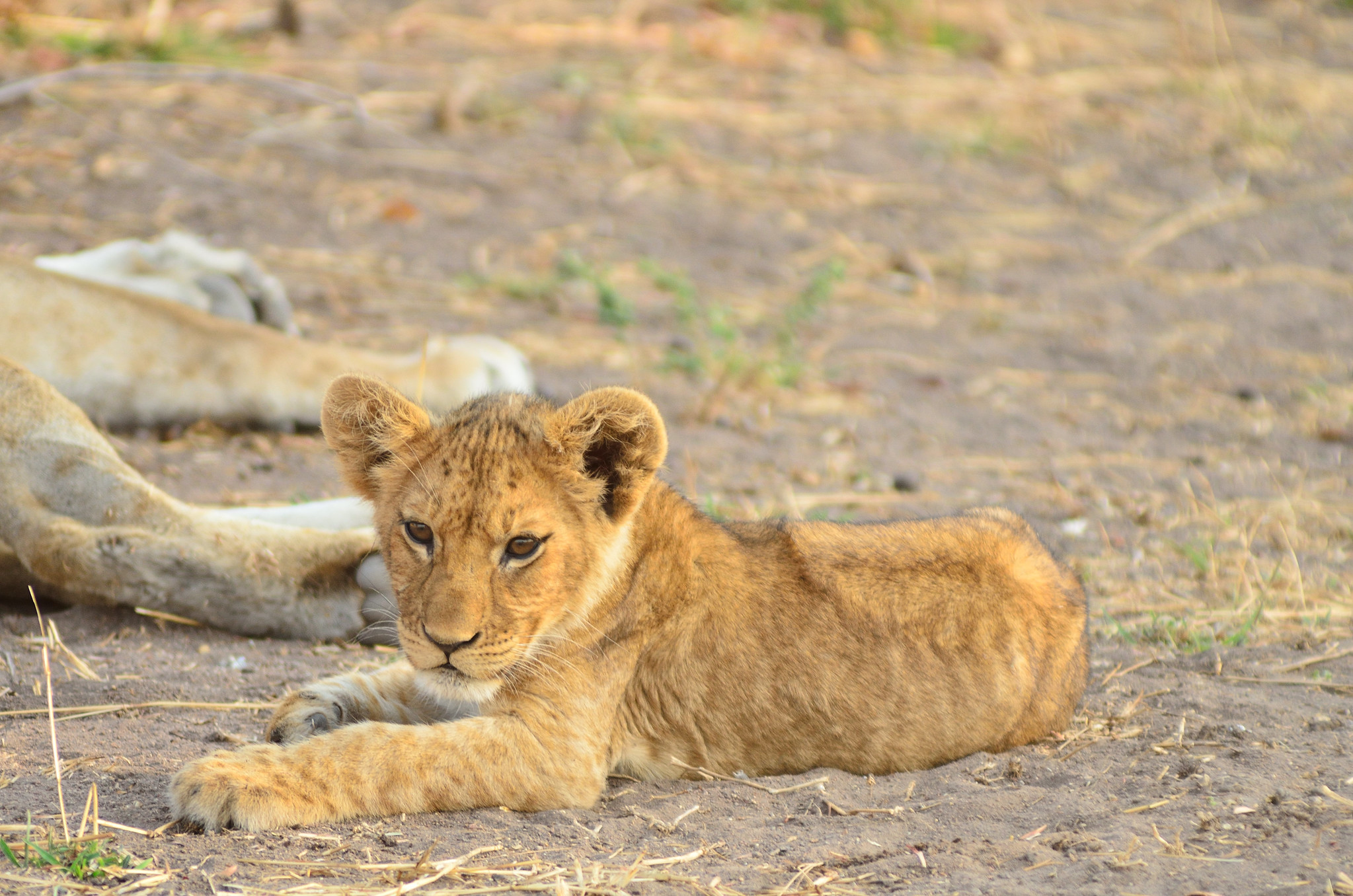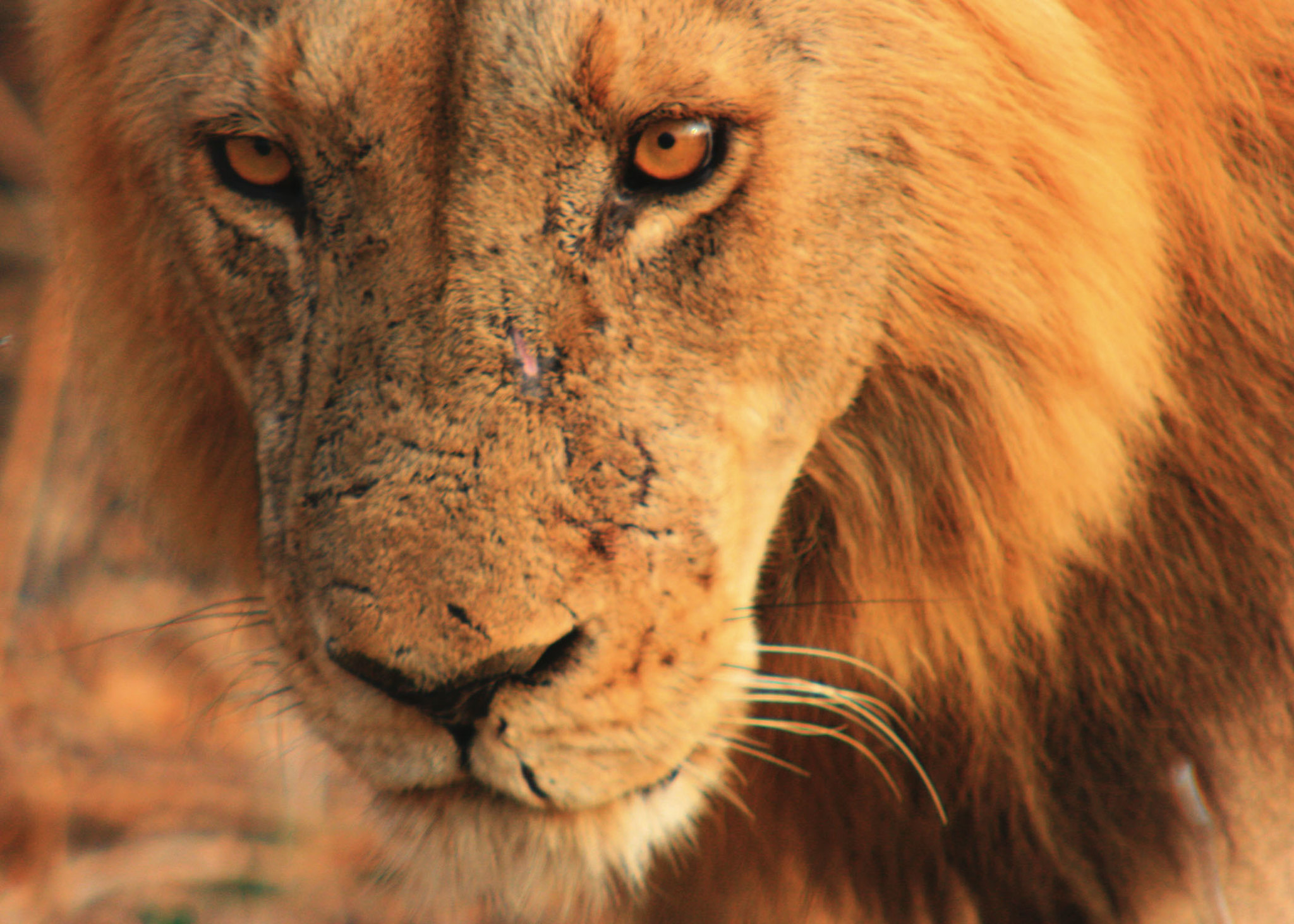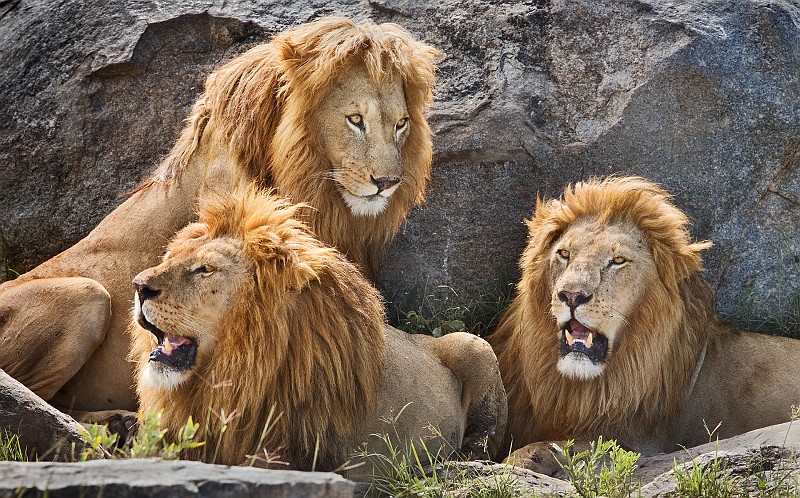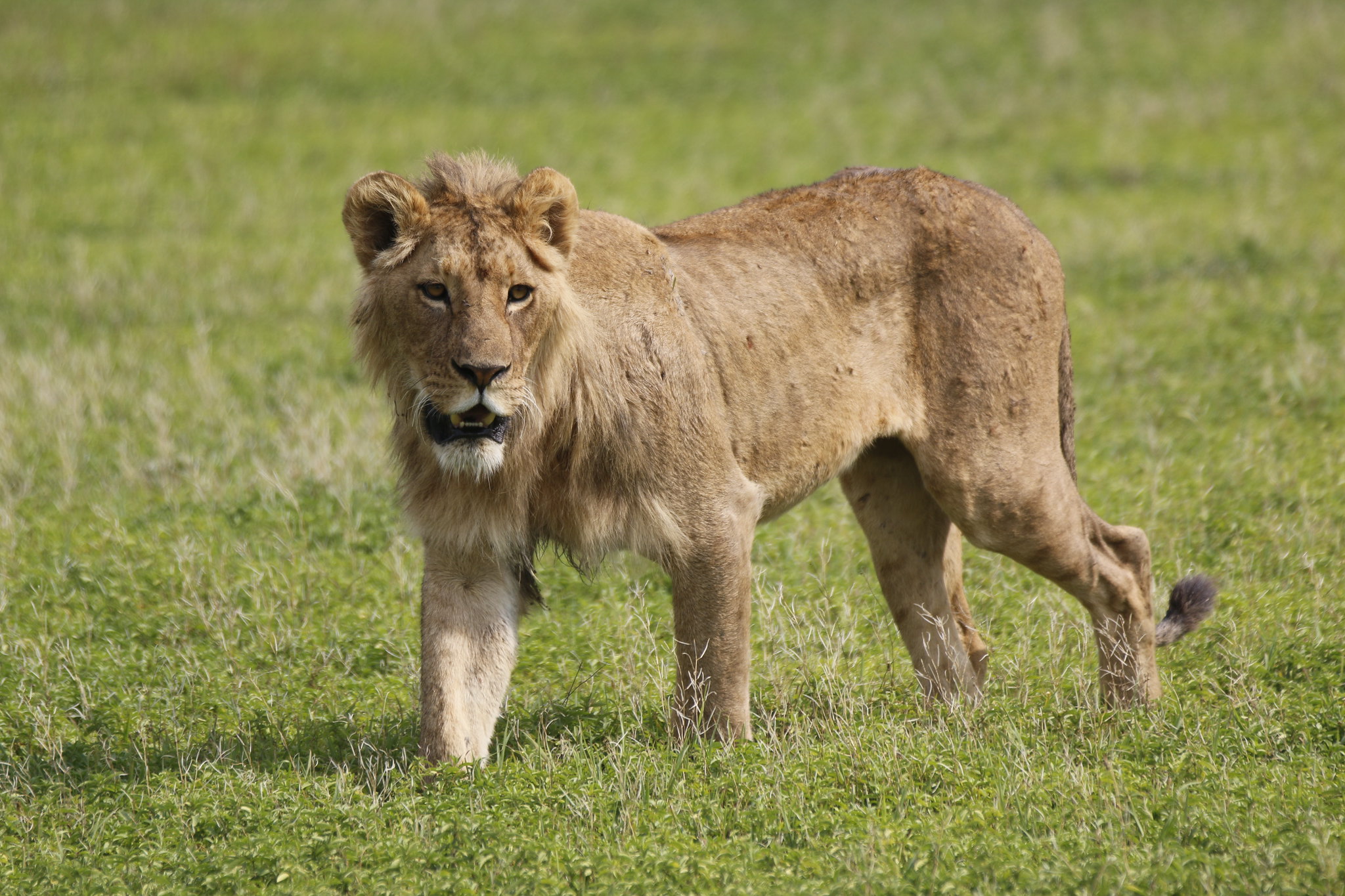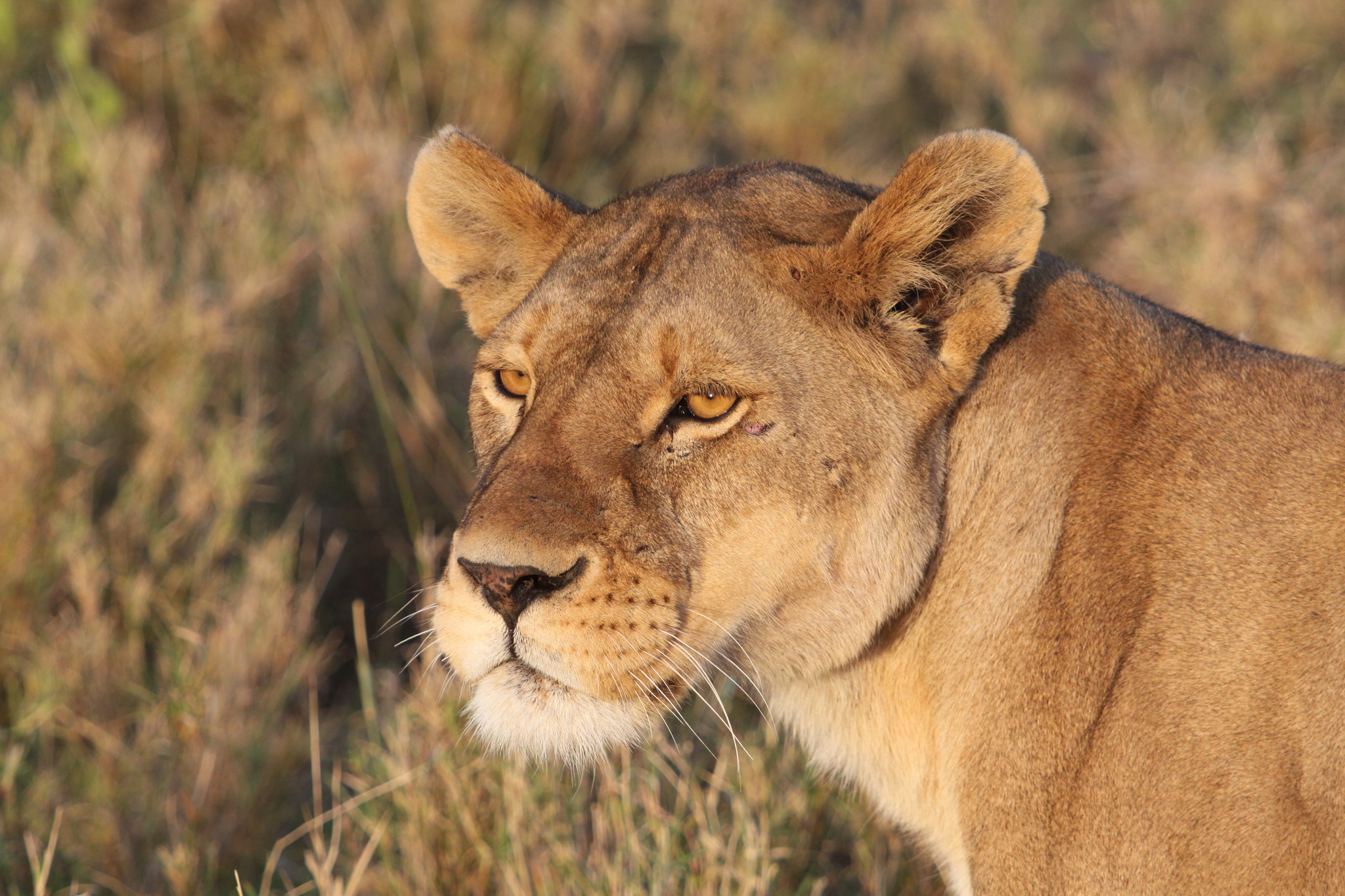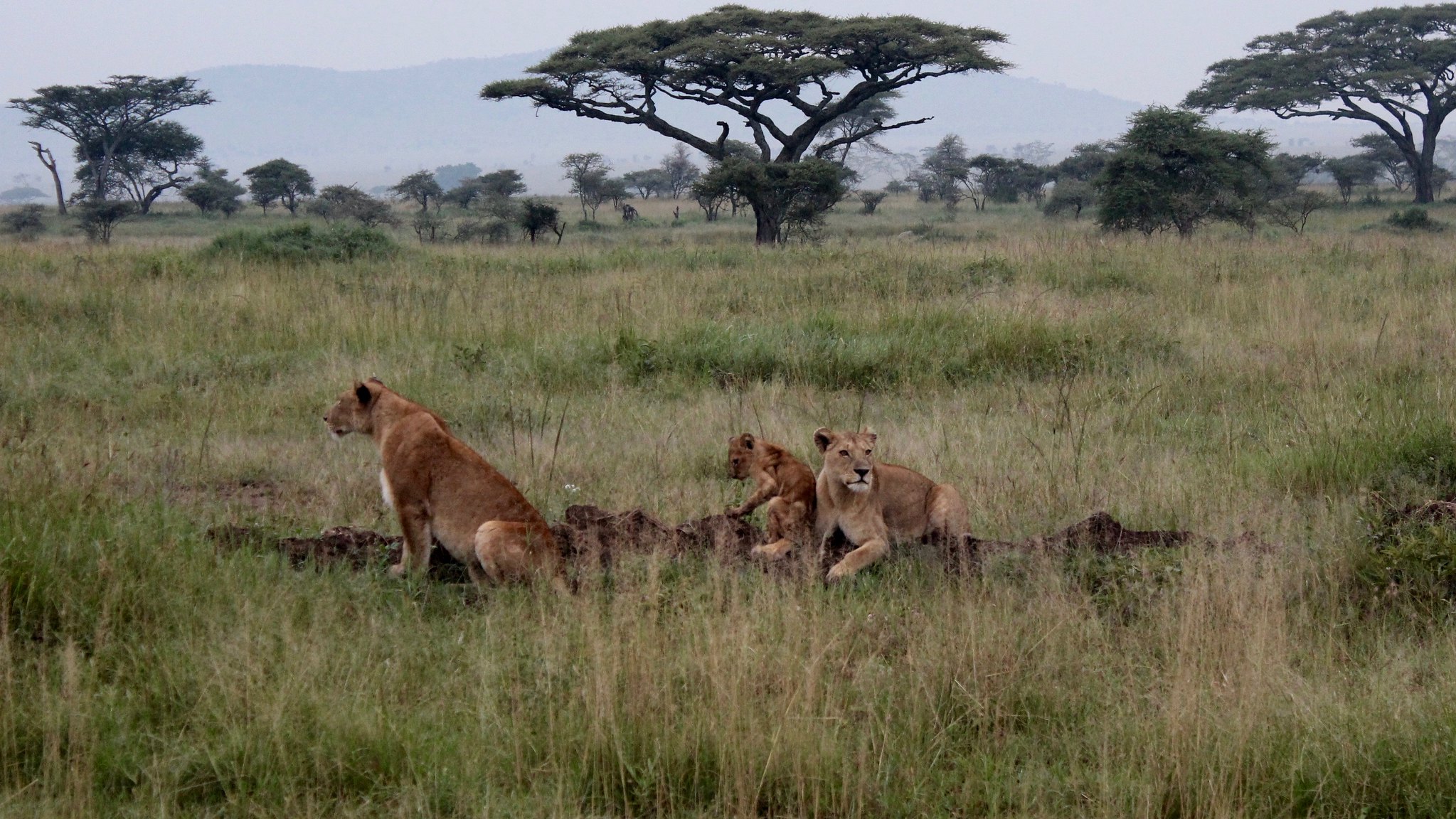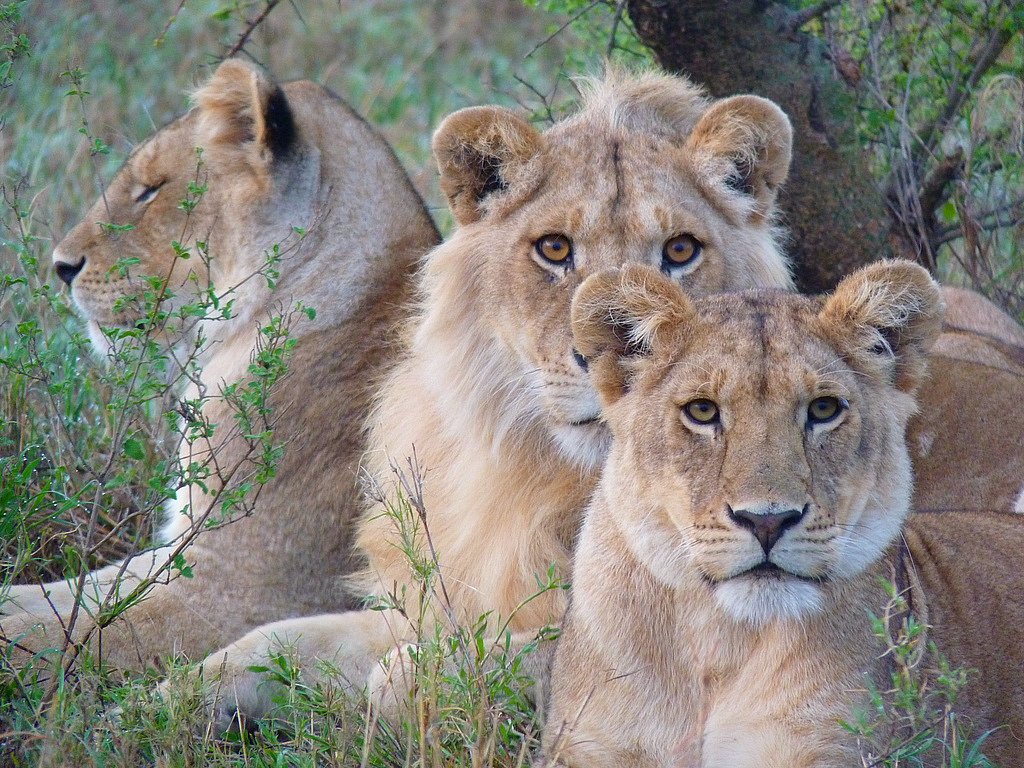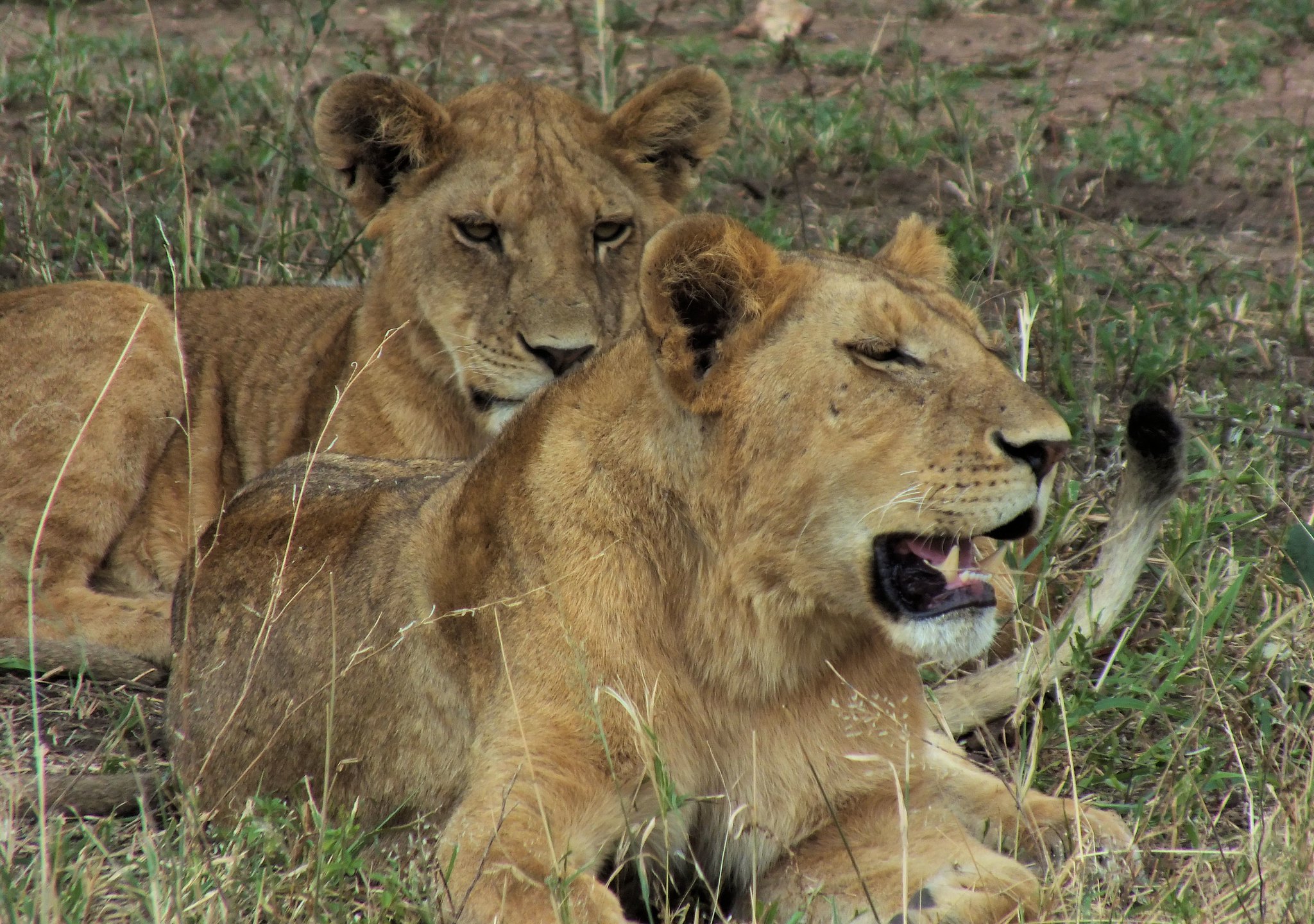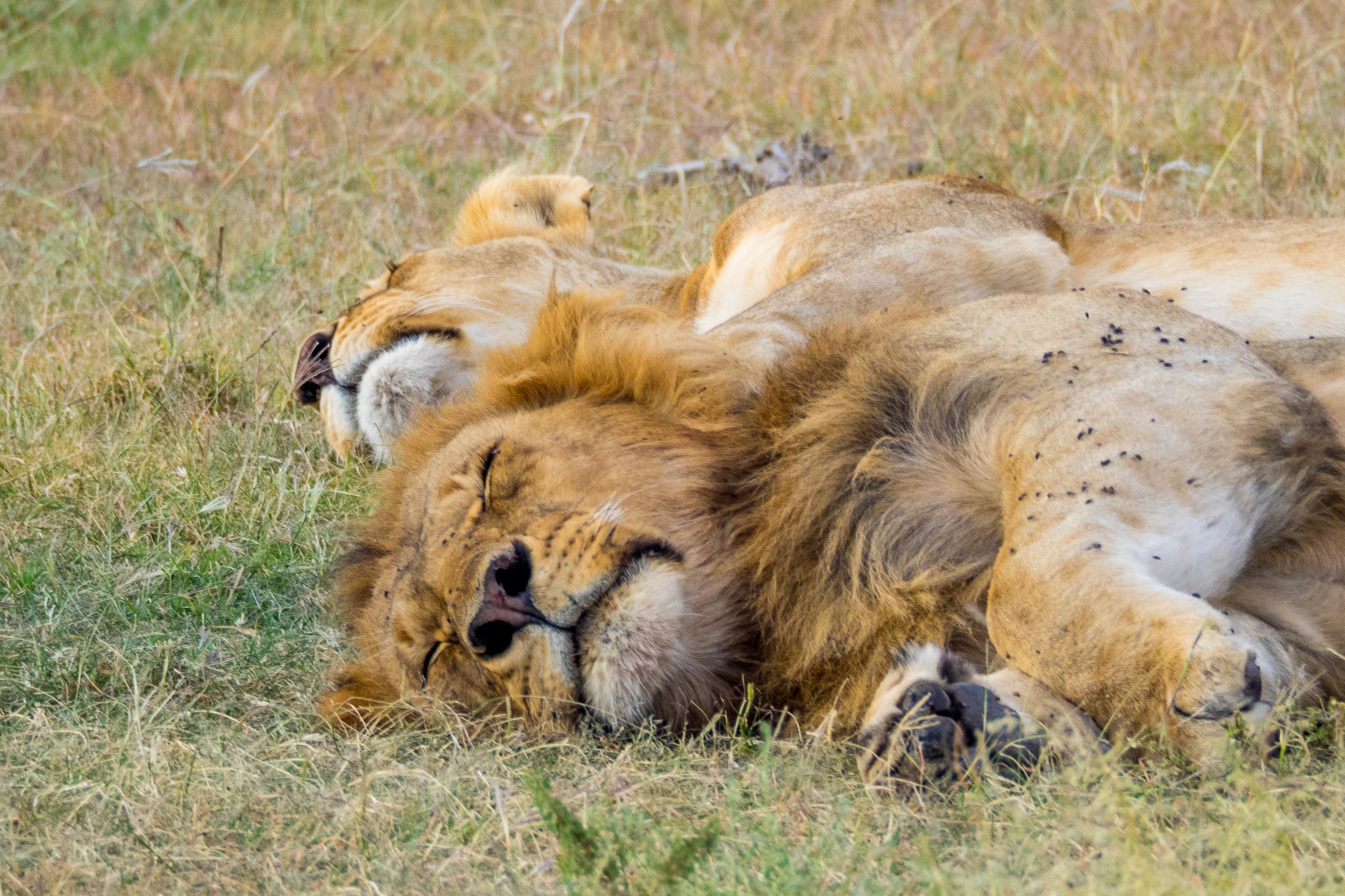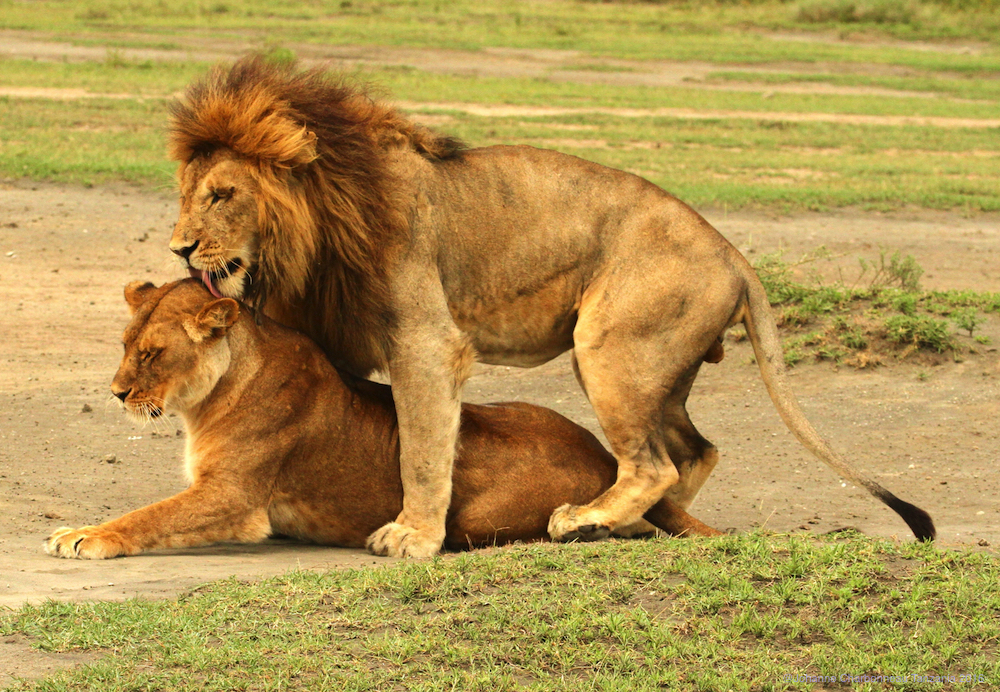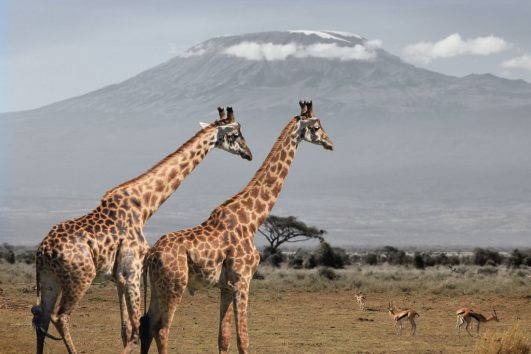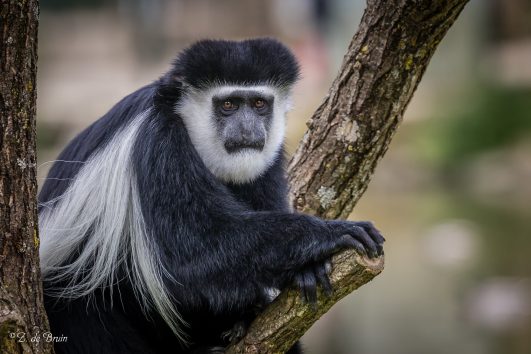Lions, scientifically known as Panthera leo, and in Swahili language as Simba, are one of the most iconic members of the cat family, Felidae. They are the second-largest big cats after tigers and are distinguished by their social behaviour, living in groups called prides, which is quite unique among cats. Lions are often referred to as the “king of the jungle,” although they primarily inhabit savannahs and grasslands, not jungles.
Lions, the majestic figures of the African savannah, have long been celebrated for their strength and bravery. These formidable creatures are the largest cats after tigers, with their deep, resonant roars capable of echoing across vast distances. Their fur, a rich yellow-gold, serves as excellent camouflage in the grasslands, with young lions sporting spots that fade as they mature. Only the males grow manes, a striking feature that symbolizes their maturity and dominance.
Tanzania boasts the largest number of lions on the African continent, with an estimated count ranging from 14,000 to 15,000 lions. Within Tanzania, the Serengeti stands out as a significant habitat, hosting around 3,000 of these majestic creatures, making it one of the key areas for lion conservation in the country. Apart from the Serengeti National Park, other great places to see the African lion in its natural habitat in the wild include the Ngorongoro Crater, Tarangire National Park, Ruaha, Nyerere National Park and Lake Manyara in Tanzania. In Kenya, we have a huge population of lions in Masai Mara, Amboseli and of course, Tsavo East & West National Park.
In the wild, male lions are the guardians of their territory, using their roars not just for communication but as a warning to potential rivals. They mark their domain with scent and will fiercely defend it against any encroachers.
The lionesses, however, are the true backbone of the pride. They orchestrate the hunts, employing tactics that require coordination to bring down swift prey like antelopes, zebras, or wildebeest. Their teamwork is essential since many of their targets can outrun them. Lionesses also share the responsibility of raising the pride’s young, fostering a communal approach to cub rearing.
Despite the cooperative nature of the hunt, the division of the spoils can often turn into a contest, with the youngest lions usually getting the least. Cubs don’t participate in hunting until they’re around a year old. Lions aren’t above scavenging either; they’ll take advantage of opportunities to steal meals from other predators like hyenas or wild dogs when the chance arises.
Are there Lions on Kilimanjaro?
No, the simple answer is none exists on the mountain but there have been some sightings maybe lions that migrate from Amboseli National Park to the northern side of Mount Kilimanjaro on the lower slopes of Rongai Route. But if you are worried that you will be eaten by lions while climbing the mountain, you have nothing to worry about.
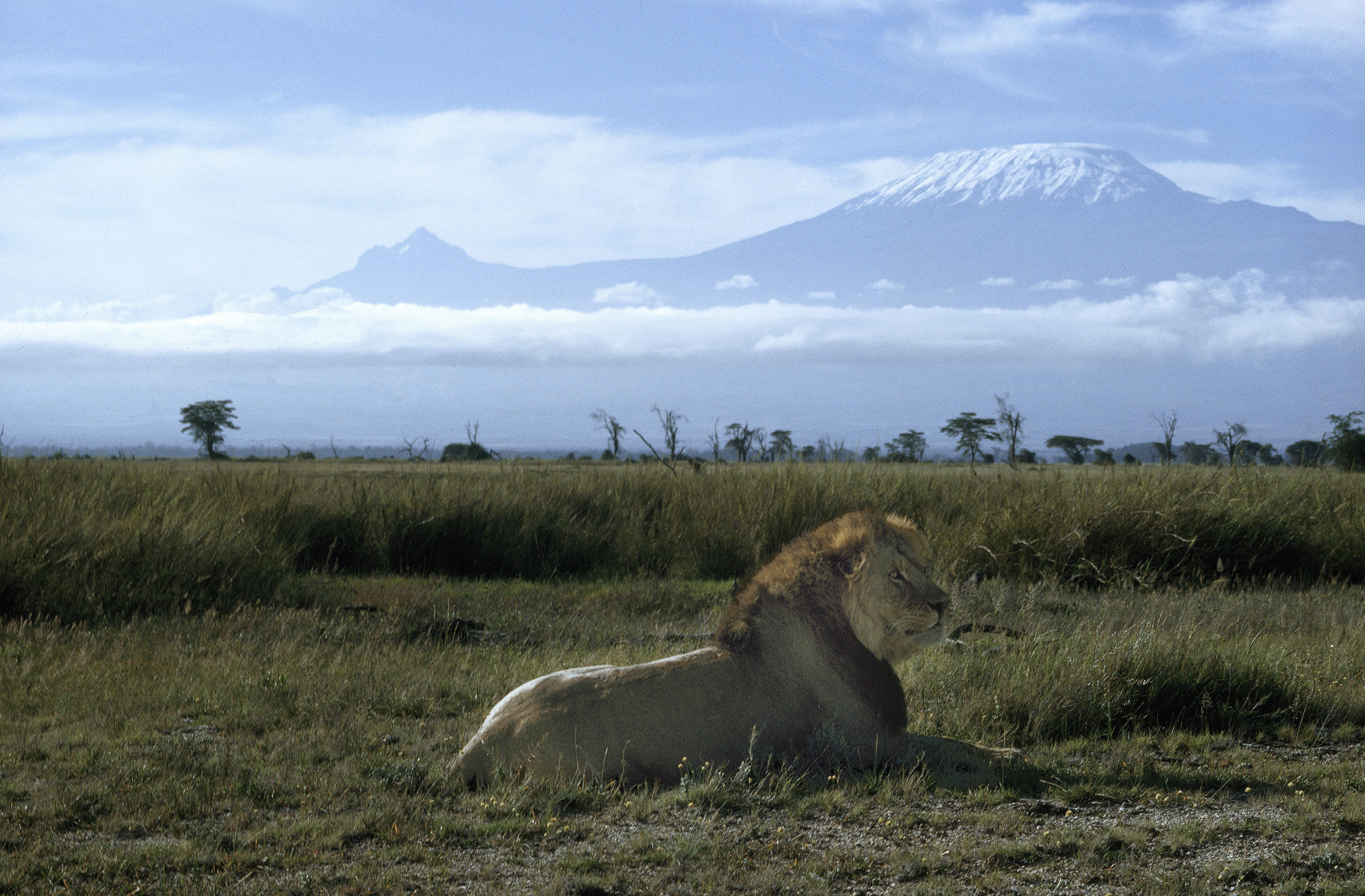
Physical Appearance of Lions:
- Size: Male lions can weigh between 150-250 kg (330-550 lbs), while females are smaller, typically weighing 120-180 kg (260-400 lbs).
- Mane: Males are famous for their manes, which vary in color from blond to black, and serve as a sign of health and genetic quality. The mane’s size and color can also indicate the lion’s age and dominance.
- Build: Lions have a robust build with strong legs, a deep chest, and a short, rounded head. Their tail ends in a dark tuft of fur, which can be as long as 1 meter (3 feet).
- Fur: Their fur is typically tawny in color, providing excellent camouflage in the grasslands.
Lion Adaptations:
- Hunting: Lions have powerful jaw muscles and large canine teeth for hunting. Their rough tongues are used to scrape meat off bones.
- Vision: They have excellent night vision, which aids in their nocturnal hunting activities.
- Roaring: Lions can roar to communicate over long distances, a sound that can be heard up to 8 kilometers away. This adaptation helps in territory marking and coordination within the pride.
- Social Structure: Unlike most cats, lions are highly social, living in prides. This social structure aids in hunting, protection, and raising cubs.
Habitat:
- Geographical Distribution: Historically, lions ranged across Africa, parts of Asia, and Europe. Today, they are mostly confined to Africa with a small population in India’s Gir Forest.
- Environment: Lions prefer open woodlands, savannahs, and grasslands where they can use the available cover for stalking prey. Their habitat must support a good population of prey species like wildebeest, zebras, and antelopes.
- Water Sources: Access to water is crucial, although lions can survive for extended periods without drinking by obtaining moisture from their prey.
Lions are apex predators, playing a critical role in maintaining the balance of ecosystems by controlling the population of herbivores. However, their habitats are increasingly threatened by human activities like agriculture, urbanization, and poaching, which has led to significant declines in their numbers in the wild. Conservation efforts are ongoing to protect these majestic animals and their habitats.
Combining a Lion Adventure Safari and Mount Kilimanjaro Trek
To see the lion king in the wild of Tanzania and also climb Mount Kilimanjaro, you can combine your Kilimanjaro trek and safari adventure. A trip of a lifetime, so surreal it looks like an adventure from the Lion King movie. We call it a combo of Pole Pole and Hakuna Matata!
Why lion is King of the Jungle
The title “King of the Jungle” bestowed upon lions is more symbolic than literal, given that lions primarily inhabit savannahs, grasslands, and semi-desert regions rather than dense jungles. Here’s why lions have earned this moniker:
- Majestic Appearance: Lions, especially males with their impressive manes, have a regal appearance that has captured human imagination for centuries. Their size, strength, and the mane give them a kingly aura.
- Social Structure: Unlike most felines, lions live in prides, which are social groups consisting of related females, their cubs, and a few adult males. This social behaviour is somewhat analogous to a royal court, with the males often seen as the “kings” or leaders.
- Apex Predators: Lions are at the top of the food chain in their ecosystems. They have no natural predators except for humans, which further cements their status as rulers of their domain.
- Roaring Authority: The lion’s roar is one of the most powerful vocalizations in the animal kingdom, capable of being heard up to 8 kilometres away. This roar is used for communication, territorial marking, and asserting dominance, much like a king’s decree.
- Cultural Symbolism: Throughout history, lions have been symbols of strength, courage, and royalty in various cultures. From ancient Egypt, where lions were associated with the goddess Sekhmet, to the lion statues guarding the entrances of places like the New York Public Library, lions symbolize power and guardianship.
- Hunting Prowess: While lionesses do most of the hunting, the male lion’s role in defending the pride, and territory, and occasionally participating in hunts adds to their perceived dominance. Their ability to take down large prey reinforces their status as supreme hunters.
- Historical and Mythological Influence: In mythology and literature, lions are often depicted as noble, brave, and wise, traits traditionally associated with kings. The lion’s representation in heraldry, flags, and emblems of nations and institutions further solidifies this image.
- Physical Dominance: Their physical characteristics, like their large size, strong build, and mane, make them stand out in the animal kingdom, contributing to the perception of them being the “king.”
However, it’s worth noting that the term “King of the Jungle” is somewhat of a misnomer since lions don’t live in jungles. Their true domain is the open savannah where they can use their strategic hunting skills to their advantage. Nevertheless, the title reflects the lion’s symbolic power and the respect they command in both the animal kingdom and human culture.
Lion Safaris in Tanzania
If you want to go on safari and see lions in the wild, consider adding Serengeti and Ngorongoro or even Ruaha on your itinerary, beloware the best safari itineraries to see these big cats of the Serengeti.
- 3 days Tanzania Safari; Tarangire, Ngorongoro, Lake Manyara
- 3 days Serengeti Safari
- 3 days Ngorongoro Safari
- 4 Days Tanzania Safari ; Tarangire, Serengeti, Ngorongoro
- 5 Days Tanzania Safari
- 7 days Tanzania Safari
- 5 Days Tanzania Safari from Zanzibar
- 6 Day Wildebeest Calving season & Migration Safari in Ndutu & Serengeti
- 10 days Mara river crossing & Great Wildebeest migration, Serengeti safari
Lion Safaris in Kenya
Kenya offers fantastic destinations for lion-seeing, wildlife safaris and game drives. Masai mara is the best place to see lions in Kenya while you are on safari. Other great destinations for spotting these brave big cats include Amboseli and Tsavo in southern Kenya.
- 3 Days Masai Mara Safari
- 4 Days Masai Mara Safari from Nairobi
- 5 Days Amboseli and Masai Mara Safari
- 7 Days Masai Mara &; Serengeti Wildebeest Crossing Safari
- 14 Day Kenya – Tanzania Safari
Are there lions at Mount Kenya National Park?
Yes, there are Lions at Mount Kenya National Park but not on the mountain. Occasionally they have been escaping from Mount Kenya National Park to the neighbouring Naro Moru town just like the lions that have to be kept under control by the Kenya Wildlife Service at Nairobi National Park.
Are there lions on Mount Meru?
No, there are no lions whatsoever on Mount Meru, not even sightings have been reported because Arusha National Park is one of the few parks in Tanzania that lacks most of these apex predators, that is why walking safaris are frequently done on this park, but with an armed ranger.
Additional information
| Habitat | Kilimanjaro National Park, Mount Meru, Mount Kenya, Rwenzori |
|---|

